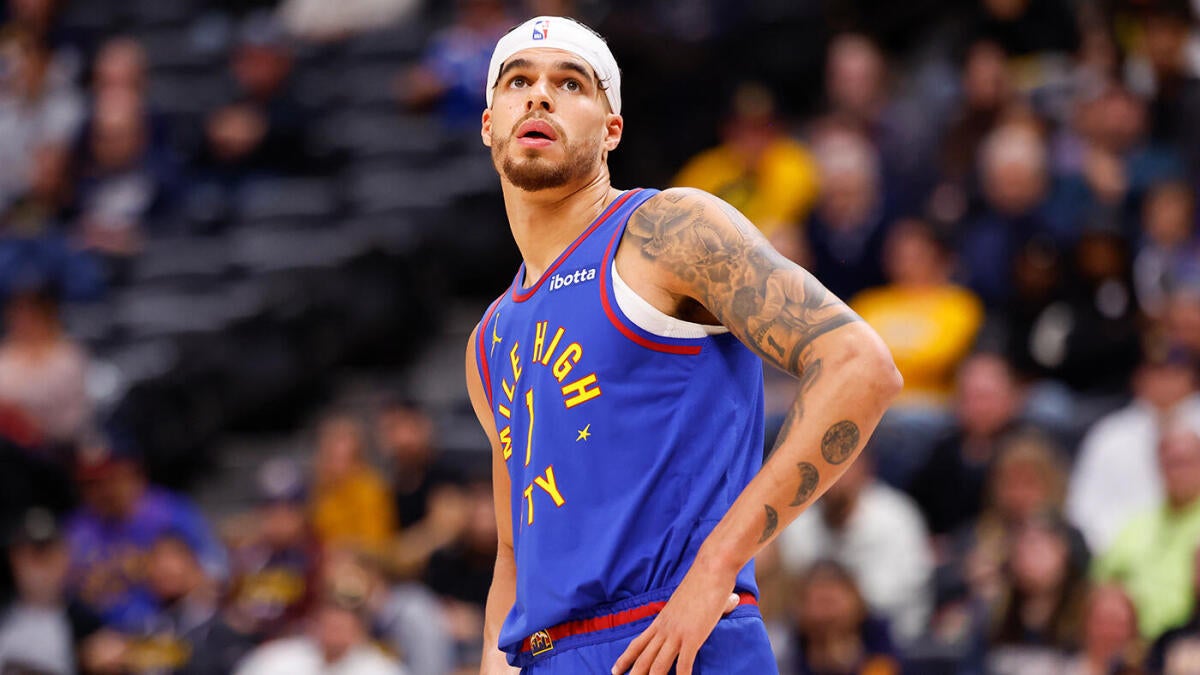The Denver Nuggets’ trade of Michael Porter Jr. to the Brooklyn Nets in exchange for Cam Johnson marks a pivotal moment in the NBA’s 2025 season, reflecting strategic realignment for both franchises. This move underscores Denver’s commitment to optimizing their roster around Nikola Jokić while Brooklyn continues to build toward a sustainable future. The trade’s implications extend beyond player swaps, influencing team dynamics, salary structures, and long-term asset management.
Context and Rationale Behind the Trade
The Nuggets’ decision to trade Porter Jr., a former lottery pick with elite scoring potential but a history of injuries, signals a shift in their roster-building philosophy. Denver prioritizes consistency and versatility, particularly in the form of three-point shooting and defensive reliability. Cam Johnson, known for his elite shooting (40.1% from three in 2024) and solid defensive versatility, fits this mold perfectly. By acquiring Johnson, the Nuggets address critical needs in floor spacing and perimeter defense, areas where Porter Jr. has been inconsistent.
The inclusion of an unprotected 2032 first-round pick in the deal highlights Denver’s urgency to recalibrate their roster immediately rather than waiting for uncertain future draft capital. This move suggests confidence in their current championship window, particularly with Jokić at the helm. For the Nets, acquiring a young, high-upside scorer in Porter Jr. aligns with their rebuild, providing immediate offensive firepower while accumulating future assets.
Player Profiles and Comparative Analysis
Michael Porter Jr.
– Age: 26
– Scoring: 18.3 points per game (2024 season)
– Shooting: 38.8% from three-point range
– Rebounding: 6.9 per game
– Strengths: Elite scoring potential, versatility as a forward, size
– Concerns: Injury history, inconsistent defensive impact
Porter Jr. has been a dynamic scorer for the Nuggets but has struggled with availability and defensive consistency. His offensive prowess is undeniable, but his injury history and defensive liabilities have influenced Denver’s decision to move him.
Cam Johnson
– Age: 28
– Shooting: Elite three-point shooter (40.1% in 2024)
– Defense: Solid defensive rotations, versatility across forward positions
– Role: Sharpshooting wing, excels in catch-and-shoot situations, spacing the floor effectively
Johnson’s profile fits the “3-and-D” archetype, addressing Denver’s need for consistent shooting and perimeter defense. His ability to space the floor and defend multiple positions makes him a valuable addition to a championship-contending team.
Immediate Impact on the Denver Nuggets
The trade enhances Denver’s spacing and defensive consistency. Johnson’s shooting ability provides Jokić with more room to operate in the paint, while his defensive acumen helps against wing threats. This move reflects Denver’s desire to establish a balanced supporting cast rather than relying heavily on Porter Jr.’s offensively dominant but less consistent game.
Sacrificing the 2032 first-round pick is a gamble on short- to medium-term competitiveness, showing Denver’s confidence in Jokić’s championship window remaining open. The trade also reduces some salary cap pressure by moving Porter Jr.’s contract, granting Denver financial latitude in free agency or future deals.
Brooklyn Nets’ Strategic Gains and Challenges
By acquiring Porter Jr. and an unprotected 2032 pick, Brooklyn gains a potentially high-impact scorer who can develop alongside their young core, including recent draft prospects like Nikola Topić. Porter Jr.’s scoring ability adds immediate offensive firepower to the roster, key for a Nets squad aiming to return to playoff contention.
The unprotected first-round pick solidifies Brooklyn’s asset base, essential in a rebuilding or retooling phase. However, the Nets assume some injury risk and must integrate Porter Jr. effectively on the defensive end to maximize the deal’s value.
Long-Term Outlook and Implications
Denver’s trade positions them as buyers focused on maximizing the current competitive window. Cam Johnson’s reliable skill set fits a championship-contender profile, but Denver will need to maintain roster health and possibly seek additional complementary pieces to balance their lineup defensively and offensively.
Brooklyn gains flexibility and future ammunition through both Porter Jr. and the draft pick but must manage development and cap implications carefully. If Porter Jr. returns to full health and consistency, the Nets could quickly benefit from a high ceiling asset juxtaposed with young talent and future picks.
Conclusion: A Bold Recalibration for Both Franchises
The Denver Nuggets trading Michael Porter Jr. to acquire Cam Johnson is a calculated bet on fit, consistency, and immediate impact. Denver lays down a marker emphasizing spacing, defense, and adaptability around their MVP core, trading away a high-upside but risk-laden scorer and a future first-round asset.
The Brooklyn Nets, embracing youth and draft capital, accept short-term uncertainty for long-term growth potential, banking on Porter Jr.’s talent and the value of an unprotected pick. This trade epitomizes contrasting team-building philosophies: one focused on the here-and-now championship run, the other on a foundational rebuild.
As both teams integrate their new pieces, the NBA landscape in 2025 will watch closely how these bold moves shape their trajectories, offering a classic narrative of risk, reward, and the relentless pursuit of winning at the highest level.











